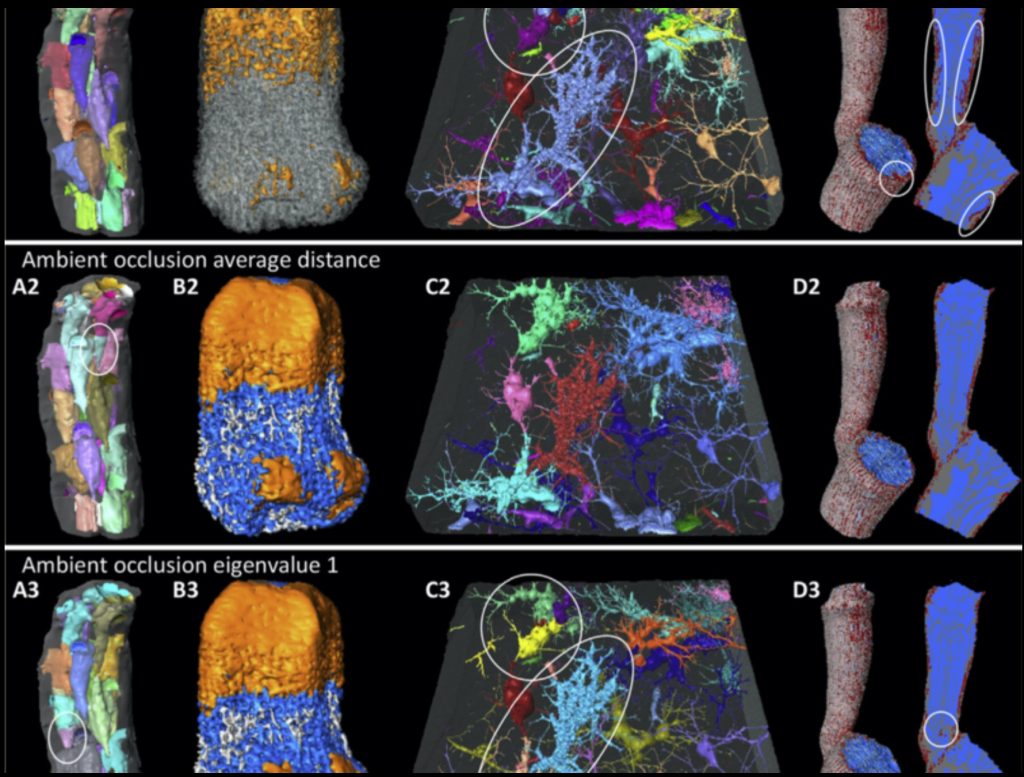Thermo Fisher Scientific › Electron Microscopy › Electron Microscopes › 3D Visualization, Analysis and EM Software › Use Case Gallery

During the last decades, X-ray (micro-)computed tomography has gained increasing attention for the description of porous skeletal and shell structures of various organism groups. However, their quantitative analysis is often hampered by the difficulty to discriminate cavities and pores within the object from the surrounding region. Herein, we test the ambient occlusion (AO) algorithm and newly implemented optimisations for the segmentation of cavities (implemented in the software Amira). (…) Additionally, we evaluated the potential of the AO field and AO-derived fields for the separation and classification of cavities as well as skeletal structures by comparing them with commonly used distance-map-based segmentations. (…) Furthermore, the application of the developed segmentation algorithm is not restricted to X-ray (micro-)computed tomographic data but may potentially be useful for the segmentation of 3D volume data from other sources.
For Research Use Only. Not for use in diagnostic procedures.